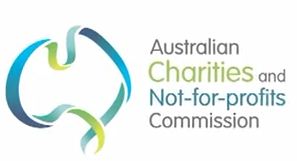The report, Research into Commonwealth Regulatory and Reporting Burdens on the Charity Sector, by Ernst & Young (EY) identified significant scope for improvement of the regulatory and reporting environment faced by charities and not-for-profits (NFPs).
EY’s study was conducted on behalf of the Australian Charities and Not-for-profits Commission (ACNC) to provide the national regulator with an independent empirical insight into the reporting and regulatory burden imposed on charities by the Commonwealth.
ACNC Commissioner Susan Pascoe AM said, “This report demonstrates that the ACNC is not the red tape problem. It’s part of the solution. The ACNC is the only government agency required by its Act to promote the reduction of unnecessary regulatory obligations on the NFP sector. We are doing that.”
EY examined the experiences of 15 case study charities drawn from subsectors in which there was anecdotal evidence of significant red tape and where research on the burdens imposed was lacking: social welfare, other education (excluding schools and universities) and health/aged care. EY also surveyed nearly 400 charities and analysed publicly available data.
Research into Commonwealth Regulatory and Reporting Burdens on the Charity Sector found that of the key sources of regulatory and reporting obligations faced by charities, fulfilling Commonwealth funding agreements imposed a far greater burden on charities than legislative requirements.
The report recommended that Commonwealth funding agencies and departments ensure reporting requirements align with the Commonwealth Grants Rules and Guidelines, and use key tools to reduce red tape.
EY estimated that the Commonwealth reporting burden on the 15 case study charities averaged $108,000 for the 2011-12 year, with between $27,000 and $38,000 constituting red tape. The average Commonwealth burden was $18,000 for small charities (revenue less than $250,000 per annum) and $235,000 for large charities (revenue over $1 million per annum).
EY estimated the average annual burden imposed by ACNC reporting obligations was $150, or 0.1 per cent of total annual burden.
The study defined ‘red tape’ as regulatory and reporting obligations that are excessive, unnecessary or confusing. The report estimated that 25 to 35 per cent of Commonwealth obligations constituted red tape, with funding agreement obligations being the key source.
Common red tape sources:
- Overly-frequent reporting and excessive information requirements under funding programs
- Duplication of information required under multiple funding programs and across different levels of government
- Inconsistency in financial reporting requirements and processes across government
<li>Inconsistencies in key regulatory frameworks across states and territories, particularly with fundraising and incorporated associations regulations.
EY was commissioned after the charitable sector asked for research into the sector’s reporting obligations.
“This research provides an evidence base to assist the ACNC to understand the source and scale of administrative requirements imposed on charities by government, and to clarify which of these requirements constitute red tape. One of the objects of the ACNC Act is to contribute to the reduction of unnecessary regulation on the sector, and we now have an empirical base on which to proceed,” says Pascoe.
The EY findings affirm the results of the recent Curtin University analysis of nearly 40,000 Annual Information Statements lodged by charities with the ACNC.












